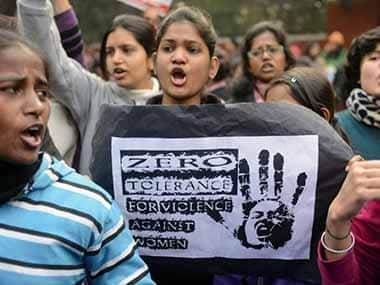When the juvenile convict in the Delhi gangrape was sentenced to serve three years in a reform home, it sparked media-fueled outrage at this show of ’leniency’. Less attention was given to the actual conditions within these reform homes, which are now receiving greater scrutiny in recent reporting. Two competing articles — from Newslaundry and Indian Express — on the Majnu Ka Tilla home, where the Delhi gangrape convict is housed, raise important questions about the state of our rehabilitation centres, and whether they actually succeed in offer the psychological counselling, education and vocational training required to turn young criminals into productive citizens. [caption id=“attachment_1130807” align=“alignleft” width=“380”]  Representational image. AFP[/caption] On the matter of vocational training, the Indian Express reported in early September “after days of counselling, the teenager told officials he was interested in learning cooking and tailoring. Since the day of his conviction, these two classes have begun. While the teacher who visits the home for the tailoring class has been ill since the first class, the cooking classes are on.”
“The juvenile has also reportedly shown interest in chess and learning the guitar none of which he pursued for too long. He, however, is said to have passed Class III and was happy about it.”
Newslaundry, however, claims that the convict is now kept in isolation, and has not been allowed to take any classes: _"_Sources told us that the “juvenile” had shown interest in learning tailoring but the superintendent of the home didn’t allow him to do so fearing he might use tailoring tools as weapons." The juvenile has been kept in isolation, allegedly for his own safety so that others cannot harm him. The officials told Newslaundry that special care cannot be provided to a child who has been kept in isolation. When in a juvenile home regular counselling is a must, says the Juvenile Justice Act, yet “this observation home allegedly has only one counselor, and the other one who visits from an organisation that provides mental health care does not come any more because the contract has not been renewed,” reports Newslaundry. Shahbaz Khan Sherwani of HAQ – Centre for Child Rights told Newslaundry: “I do not know how much truth is there in the fact that he has been kept in a separate place for his own safety as other inmates would kill him. But if this is the reason why are they not providing him personal care, he needs special attention” The decision to isolate the convict seems to be a recent one, as Indian Express quoted home officials painting a different picture just weeks earlier: “These days he has become more comfortable with his surroundings. He is eager to go for meditation every morning before breakfast. He is confident while speaking to the other inmates and the guards inside the house.” Both reports suggest that the convict’s main activity is watching TV, which affirms the complaints of many juvenile justice activists. As Bharti Ali, co- director of a Delhi based NGO, HAQ — Centre for child rights, earlier told Firstpost :“No routine is followed in these homes. Inmates watch TV almost the whole day. Educational classes are imparted. Tailoring and cookery sessions are conducted. But attending these classes is at the discretion of the offender. There is no individual care plan or assessment.” On paper, The Juvenile Justice Act lays down various requirements for a special home:
- It should be located nearest to the place of residence of the juvenile’s parent or guardian. - It shall be child-friendly and in no way shall they look like a jail or lock-up. - Separate special homes for girls above the age of 10 years and boys in the age groups of 11 to 15 and 16 to 18 years. - A daily routine for inmates developed in consultation with the Children’s Committees - A well conceived programme of pre-release planning and follow up of cases discharged from special homes.
But these rules are hardly followed. Our juvenile homes are poor equipped and cannot provide the care needed for a juvenile to actually reform. “They claim that they provide vocational training and educational classes. But the fact is that they don’t achieve any purpose other than keeping the juveniles engaged for sometime. They are adolescent boys with lots of energy. When it does not get channelised towards any positive activity, they become destructive. They do all kinds of things to seek attention,” Asha Mukundan, assistant professor with the Centre for Criminology and Justice, Tata Institute of Social Sciences, tells Firstpost. But human rights activists and child rights lawyers argue that we should not view such failures as leniency, but as a failure to fulfill the purpose of juvenile justice, which is to ensure reform. “Seriousness of the offence has been considered in JJ Act and there are special measures in the Act. Also, why consider only seriousness of offence? Why not also consider the seriousness of situation of the child?” says Child rights lawyer Anant Kumar Asthana. Read the full Newslaundry report Being “Juvenile” here and the Indian Express report Delhi gangrape: The juvenile, at home here.


)
)
)
)
)
)
)
)
)



